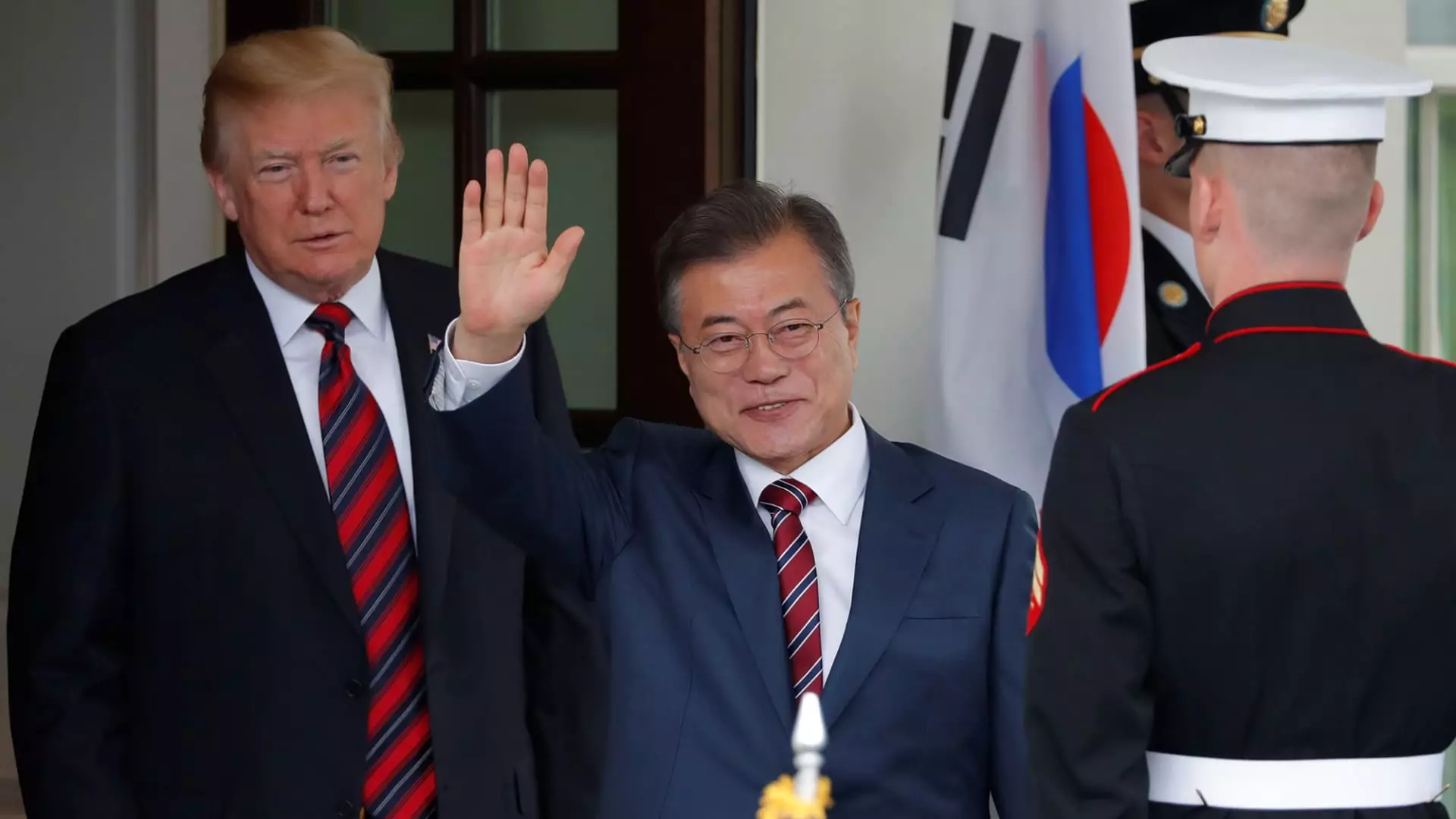The auto industry in the United States finds itself at a crossroads, as threats of increased tariffs from President Donald Trump loom large over its future. The possible repercussions of these tariffs, particularly on key trading partners in East Asia, could significantly alter market dynamics and operational strategies for major automakers. Analyzing the delicate balance of trade relationships, particularly with South Korea and Japan, reveals the complexities and challenges the industry faces.
In recent years, both South Korea and Japan have emerged as formidable forces in the American automotive market. Last year, they accounted for an impressive 16.8% of total vehicles sold in the U.S., with South Korea outperforming Japan for the first time. Historically, automakers like GM and Hyundai have enjoyed tariff-free access for exporting vehicles from South Korea, promoting its rise to the status of the second-largest exporter of new cars to the U.S., trailing only behind Mexico.
Such statistics reflect the evolving dynamics within international trade agreements. South Korea’s elimination of duties on automobiles, coupled with a renegotiated trade agreement in 2018, has allowed its manufacturers to thrive in the competitive U.S. market. Meanwhile, Japan, which previously enjoyed a more advantageous position, now finds its percentage of sales decreasing, highlighting the shifting allegiances and market share in the automotive sector.
As tariffs threaten to spike further, it becomes crucial to assess how these economic maneuvers might affect the prices and availability of vehicles for American consumers. South Korea-based automakers face substantial exposure to tariffs. For instance, General Motors has notably increased its imports from South Korea, translating to a leap in sales from 173,000 vehicles in 2019 to over 407,000 last year. This reliance on South Korean production means that any tariff could directly affect the prices of these entry-level models and potentially alter consumer demand.
Moreover, the uncertainty surrounding the implementation of tariffs raises concerns among industry experts. Concerns revolve around the likelihood of automakers passing increased costs onto consumers, which could ultimately harm vehicle sales and deter potential buyers. This chain reaction may not only impact vehicle sales but ripple across the broader economy as consumer spending tightens in response to rising costs.
The broader implications of rising tariffs may extend beyond just increased production costs for automakers. For instance, automakers like Ford are advocating for a comprehensive tariff policy that takes into account the import practices of all nations. This push emphasizes the need for fairness in trade regulation to ensure that U.S. automakers are not at a competitive disadvantage against foreign counterparts like Toyota and Hyundai, which continue to ship large volumes of vehicles into the U.S.
The call for comprehensive tariffs illustrates the interconnected nature of global trade and suggests that policymakers need to consider the ramifications of selective tariff implementation carefully. Selective targeting could inadvertently favor certain market players while putting others at risk, potentially undermining the competitive landscape that U.S. automakers rely upon.
The concept of free trade has been foundational for the automotive industry, facilitating innovation, competition, and consumer choice. Experts suggest that the automotive sector is capable of long-term adaptation to new economic realities. However, significant tariffs—especially those reaching or surpassing 10%—could jeopardize profit margins and operational viability, leading to shifts in manufacturing strategies and market approaches.
As automakers brace for potential effects on production costs and consumer behavior, they must weigh their options carefully. Many industry leaders express confidence in their ability to adjust to new market conditions. Yet effective adaptation takes time, caution, and often substantial investment—a reality that underscores the risks of abrupt policy changes.
The auto industry’s fate hangs in the balance amid shifting trade policies and threats of increased tariffs. With key partners like South Korea and Japan posing both opportunities and risks, the industry’s ability to navigate these challenges will define its future. Automakers must remain agile, responsive to consumer preferences, and strategic in approach to maintain profitability. The outcome ultimately depends on policymakers’ ability to foster a fair and balanced trade environment that supports sustainable growth in a highly competitive market. As the industry watches and waits, the stakes have never been higher.

